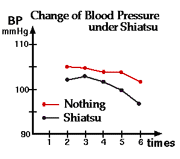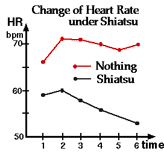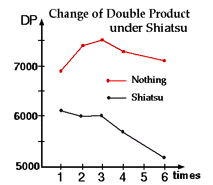Zen Shiatsu And The Basics (Nobuyuki Fujisaki & Masami Fujisaki)
Firstly
“Zen Shiatsu” is a style of Shiatsu therapy, which late Shizuto Masunaga created and refined. This Masunaga style Shiatsu is very famous among general Shiatsu therapists. And almost six years have passed after Masunaga died. The many achievement of Masunaga which he left in the lifetime can be seen in each theory in his many writings. The summing-up is all complied in his book “The Meridians and Shiatsu” (published by Ido-no-Nippon Co.). The greatest achievement of Masunaga is that he made Shiatsu Therapy leveled up to an academical level, and he introduced it into the medical field. His theories concerning Shiatsu were so excellent and persuadable, which could make the general practitioners believe that “Zen Shiatsu can cure diseases.” However, Zen Shiatsu therapists of the succession have not grown yet up to the present.
The articles which Masunaga wrote in his lifetime were very difficult. Therefore, it was almost impposible for general Shiatsu practitioners to understand his theories. Then I was considering that I would try to explain his difficult theories of Zen Shiatsu more comprehensibly. Before we talk about Zen Shiatsu, the fundamental questions on Shiatsu should be examined at first.
The effects of Shiatsu therapy

The first question is the fact of whether Shiatsu treatment is really effective in clinical for diseases. In Physiology, autonomous nerves and incretion regulate the condition of the body automatically, and parasympathetic nerve system influences the base of the functions of inner organs. The sympathetic nerve system is only to add the accent for the function of inner organs. When the balance of this automatic nervous system collapsed, nonspecial and various symptoms appear. Most patients of Shiatsu therapy are complaining of various kinds of unidentified complaints. However, in many cases, there cannot be seen any abnormal data or any organic abnormality in the clinical examinations even if they receive the scrutiny in hospitals. In Japan, such patients come and receive Shiatsu treatment. How Shiatsu therapists should consider for such patients?
The Sympathetic and Parasympathetic Nerve System
The autonomous nerve system work s for rivalry like. The sympathetic nerve system is inhibitory for works of the inner organs. The functions of digestion and gland secretion are suppressed by this nerve system. Then, the heart rate rises, and the blood vessels of skeletal muscles are expanded, and blood pressure and cardiac outputs increase. In short, the body becomes an excited state.
In other words, it is meant that the human body gets excited when the stimulation of the sympathetic nerve system is given. On the other hand, the blood pressure and the heart rate get lower when the parasympathetic nerve system predominates. Then, the followings are promoted: Digestion activity, gland secretion, defecation, and voidance. In short, the body becomes into resting and relaxing condition. This means that the human body is led to resting condition when the stimulation of the parasympathetic nerve system is given.
Do you remember that doctors often advise us to rest and sleep sufficiently in order to get recovered from diseases? Do you know why? The parasympathetic nerve system predominates while we are sleeping, which we can make adjustment of internal environment as the result. The illness becomes easy to be cured when the internal environment gets well. If so, isn’t it possible for us to lead the patient’s body condition to the parasympathetic nerve system taking advantage by the stimulation of Shiatsu? If it is possible, Shiatsu can be said that it works clinically and is a medical therapy. Now, how can we see in Shiatsu treatment whether it is able to stimulate the parasympathetic nerve system. It can be judged in whether the signs appear after the treatment, which we can see when the parasympathetic nerve system predominates. The followings are the signs. Such as:
- Do the heart rate and the blood pressure get lower?
- Does the respiratory rate lower?
- Does the patient get sleepy?
- Does the patient feel colder?
- If the answers are yes, which means your treatment gives good stimulation to parasympathetic nerve system of the patient.
The Change of vital signs by Shiatsu Therapy
The figure 1 shows the change of blood pressure during Shiatsu treatment. The red line shows the change of the blood pressure when the patient just kept laying down in spine position, then Shiatsu treatment was not given. Also the blue line shows the change of the blood pressure when the patient received Shiatsu treatment (pressure applied by palms) on his abdomen. The measurement was done in every 5 minutes. Then, the change was observed for thirty minutes.

Let’s see the result. There is not a large difference on the red line. On the other hand, the blue line fell down gently, which means the blood pressure lowered by Shiatsu. The heart rate also gradually lowers under Shiatsu treatment as you can see the figure 2. It is meant that the patient’s body becomes under control of parasympathetic nerve system by Shiatsu treatment. Simultaneously, lowering of the respiratory rate, relaxation of the skeletal muscles, and feeling sleepy, appeared otherwise of the change of the cardiac function. By this result of the experiment, the following facts are proven.
Shiatsu therapy can lead the patient to the rest condition. The blood pressure change under Shiatsu is gentle and does not change rapidly at all. It shows that Shiatsu mildly affects for the human body organism. The body does not change suddenly during the treatment if the right stimulation of Shiatsu is done. And, to change gradually means, in another word, that time should be taken. So, how long does it take for us to lead the patient’s body to the rest condition by Shiatsu?
The evaluation of the cardiac function can be evaluated in the index (the maximal blood pressure x the heart rate) of DP (Double Products) used in circulatory organs. The graph of DP is shown in figure 3. In this example, the DP value gets lower in about 20 minutes after the beginning. It is shown that the patient begins to shift to the rest condition after 20 minutes from the beginning of the Shiatsu treatment.
Finally

The medical effects can be expected if Shiatsu treatment is given to over 20 minutes using the right techniques of Shiatsu therapy. However, many books and text books of Shiatsu therapy only show the acupoints (keiketsu) and say that we can cure the diseases if we push those acupoints. Some Shiatsu schools emphasize to remember the acupoints. But now I think you have known that emphasizing acupoints is a mistake. In the real Shiatsu therapy, we have to judge the acupoints in proportion to the each patient’s condition. Then, therapists choose the techniques to use for the patient and decide the quantity of stimulus by judging of the condition. With this, they will lead the patients under the control of the parasympathetic nerve system.
Also, medical status of Shiatsu therapy and acupuncture resemble each other though, they are not same. The quality of the stimulation is completely variable in acupuncture and fingers. In Shiatsu therapy, patients do not show either the resistant discomfort, because Shiatsu gives stimulation by using some parts of the body. And also the stimulation is mild. On the other hand, the acupuncture is quite different thing for the human body. The stimulation is also sharply intense. Therefore, the stimulation is much largely and rapider in the reaction compared with Shiatsu.
However, it is not meant that Shiatsu is inferior to acupuncture on this fact. Because acupuncture affects it for the organism resistant, it causes accidents frequently. So, the operation maximizes a lot of cautions. The techniques must be strictly accurate. But in Shiatsu, manipulative technique itself is easy to harmonize with the human organism, and we do not need to use difficult techniques for the operation strictly like in acupuncture. Moreover, it is much safer, which accidents are hardly happen even if beginners do it.
———————————————————————–
© Nobuyuki Fujisaki & Masami Fujisaki (Zen Shiatsu Association)
Nobuyuki Fujisaki is born in 1954 in Tokyo, Japan and Graduate Tokyo Electrical Engineering College after majoring in Tele Communications. He became interested in Shiatsu Therapy at age of 11 and began practiced own method of Shiatsu until the age of 20 , when he joined the Ioh Kai Zen Shiatsu Center, where he studied original style of Zen Shiatsu under the Master Shizuto Masunaga. After graduating from the Institute, he went to the Japan Shiatsu School in Tokyo and obtained a National License for Shiatsu Therapy in Japan in 1987. After obtaining a license, he formed the “Zen Shiatsu Association” to promote this unique method of Shiatsu treatment world-widely. His activities include teaching, seminars, workshops teaching classes for professional Shiatsu therapists.
Masami Fujisaki is born in 1959 in Chiba, Japan. Graduated from Kanda Institute of Foreign Languages. After 2 years of studying psychology in Crafton Hills College, California, Masami graduated from the Japan Shiatsu School. At the same time, she studied Zen Shiatsu in the IOHKAI Shiatsu Center and got a certificate from the institute. She obtained Japanese national license of a professional therapist of western massage, Chinese massage, and Shiatsu therapy in 1987 and started to manage Zen Shiatsu Association with her husband to promote Zen Shiatsu therapy. She is a Zen Shiatsu therapist and instructor.
